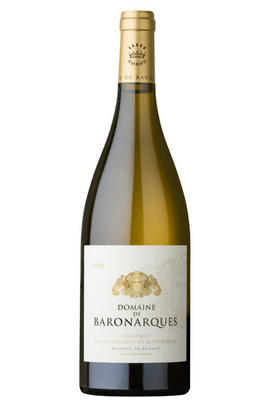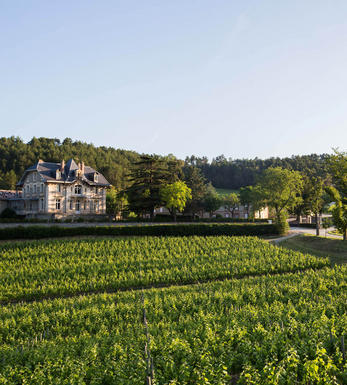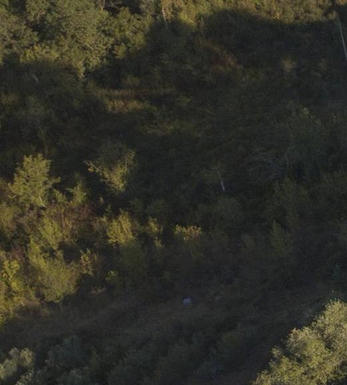
2021 Domaine de Baronarques, Blanc, Limoux, Languedoc

Critics reviews
Always a successful Chardonnay, with the grip and tension that can be teased out of the grape at these high altitudes in the Limoux region. For the first time this year there is an addition of 5% Chenin Blanc, giving an edge of lime blossom. Good quality, tiwst of fennel, bitter almond and honeysuckle flowers. Good length, enjoyable wine. Has lift and plenty of drawn out flavours. Fabrice Boullier winemaker, Augustin Deschamps director. 43ha estate.
Drink 2023-2030
Jane Anson, JaneAnson.com (August 2023)
Peaches and melons with zesty lemon and flowers, such as honeysuckle. Full, yet so vivid, bright and minerally. Drink now.
James Suckling, JamesSuckling.com (August 2023)
Creamy, rich and yet wonderfully pure, focused and precise. Quite floral and delicate at first on the nose with a salivating salinity and freshness. Everything about this is crystalline. Very pure. Very fine. The most vertical in its aromatic presentation of this little flight of vintages. This has a glorious shape and evolution across the palate in the mouth. Tighter and tenser from the start than the 2020, the freshness incorporated throughout rather than welling up from below. Very structured. A brilliantly gracious wine of great freshness – dense, like the 2020, but more compact, taut and tense. Incredibly long and incredibly linear … tapering in steps towards the finish (like descending a long mountain staircase). The finish is so dynamic and lively – one senses the health of the vineyard. The best Domaine de Baronarques I have ever tasted.
Colin Hay, The Drinks Business
About this WINE

Domaine de Baronarques
Domaine de Baronarques is a wine estate in the Languedoc-Roussillon region in the South of France. It lies in the Saint-Polycarpe commune within the appellation of Limoux, part of the Aude department. Once owned by the eighth-century Benedictine Abbey of Saint-Polycarpe, the domaine is now part of the Baron Philippe de Rothschild group. The portfolio includes leading Bordeaux properties Châteaux Mouton Rothschild, Clerc Milon and d’Armailhac, among other notable names. Domaine de Baronarques and the wider group belong to Camille Sereys de Rothschild, Baron Philippe Sereys de Rothschild and Julien de Beaumarchais de Rothschild.
The estate’s geographical location mean it enjoys influence from both the Atlantic Ocean and the Mediterranean Sea. This impacts the choice of grape varieties cultivated here, which are a mix of those you might find in Southern France along with those more typical of Bordeaux. The vineyard plantings include Merlot, Cabernet Franc, Cabernet Sauvignon, Syrah and Malbec for reds; and Chardonnay and Chenin Blanc for whites. All grapes are harvested by hand.
In the cellar, the red wines are vinified individually in small tanks before careful blending. Domaine de Baronarques Rouge undergoes 12 months’ barrel ageing. Domaine de Baronarques Blanc is whole-bunch pressed, fermented in barrel and then aged in French oak for eight months. The proportion of new oak used is kept low.

Limoux
Limoux is a picturesque town in the Occitanie region’s Aude department in southern France. It’s known for its historical significance and its contributions to winemaking. One of the notable aspects of winemaking in Limoux is its claim to fame as one of the earliest regions to produce sparkling wine, even before Champagne.
The region is particularly famous for producing Blanquette de Limoux, considered one of the oldest sparkling wines in the world. It dates back to the 16th century and is made using the traditional method, which involves a secondary fermentation in the bottle to create the bubbles. The grapes used for Blanquette de Limoux include Mauzac, Chardonnay, and Chenin Blanc.
In addition to Blanquette de Limoux, the region produces Crémant de Limoux. This sparkling wine uses the same traditional method as Champagne, with a second fermentation in the bottle. It can be crafted from Chardonnay, Chenin Blanc, Mauzac, and Pinot Noir grapes, resulting in various styles ranging from dry to slightly sweet.
Limoux also produces still wines, both white and red. The white wines are typically made from Chardonnay and Chenin Blanc grapes and often exhibit a balance of freshness and fruitiness. The red wines are usually crafted from Bordeaux varietals like Merlot, Cabernet Sauvignon, and Malbec, as well as local grapes such as Syrah and Grenache.
The terroir of Limoux is characterised by a combination of Mediterranean and Atlantic influences, which contributes to the unique characteristics of the wines produced here. The region’s diverse soils, ranging from clay to limestone, also play a significant role in shaping the flavour profiles of the wines.
Winemakers in Limoux use modern and traditional techniques to craft their wines. The traditional method of secondary fermentation in the bottle for sparkling wines is a hallmark of the region. For still wines, careful vineyard management, precise harvesting, and thoughtful vinification processes contribute to the quality of the final product.
In recent years, Limoux has gained recognition for its commitment to producing high-quality wines and maintaining its unique winemaking traditions. It continues to be a significant player in sparkling wines, offering an alternative to the more famous Champagne while showcasing its distinctive character.

Chardonnay
Chardonnay is often seen as the king of white wine grapes and one of the most widely planted in the world It is suited to a wide variety of soils, though it excels in soils with a high limestone content as found in Champagne, Chablis, and the Côte D`Or.
Burgundy is Chardonnay's spiritual home and the best White Burgundies are dry, rich, honeyed wines with marvellous poise, elegance and balance. They are unquestionably the finest dry white wines in the world. Chardonnay plays a crucial role in the Champagne blend, providing structure and finesse, and is the sole grape in Blanc de Blancs.
It is quantitatively important in California and Australia, is widely planted in Chile and South Africa, and is the second most widely planted grape in New Zealand. In warm climates Chardonnay has a tendency to develop very high sugar levels during the final stages of ripening and this can occur at the expense of acidity. Late picking is a common problem and can result in blowsy and flabby wines that lack structure and definition.
Recently in the New World, we have seen a move towards more elegant, better- balanced and less oak-driven Chardonnays, and this is to be welcomed.


Buying options
Add to wishlist
Description
I’ve long been a fan of Domaine Baronarques, particularly the whites, and the 2021 continues the impressive run of form. For me, the whites are reminiscent of Burgundy, both stylistically and in production volume. The 2021 could easily be mistaken as a fine Puligny-Montrachet, opening with a complex and intense nose of white flowers, lemon preserve and citrus zest, with a touch of sweet brioche unfurling in the background. The palate is weighty, rich, slightly buttery and with plenty of orchard pear and melon fruit to admire. The mineral backbone and balance keep everything in check, finishing long and fine. Another terrific effort from the Mouton backed Domaine.
Drink now - 2030
Dominic Goddard-John, Senior Account Manager, Berry Bros. & Rudd (August 2023)
wine at a glance
Delivery and quality guarantee